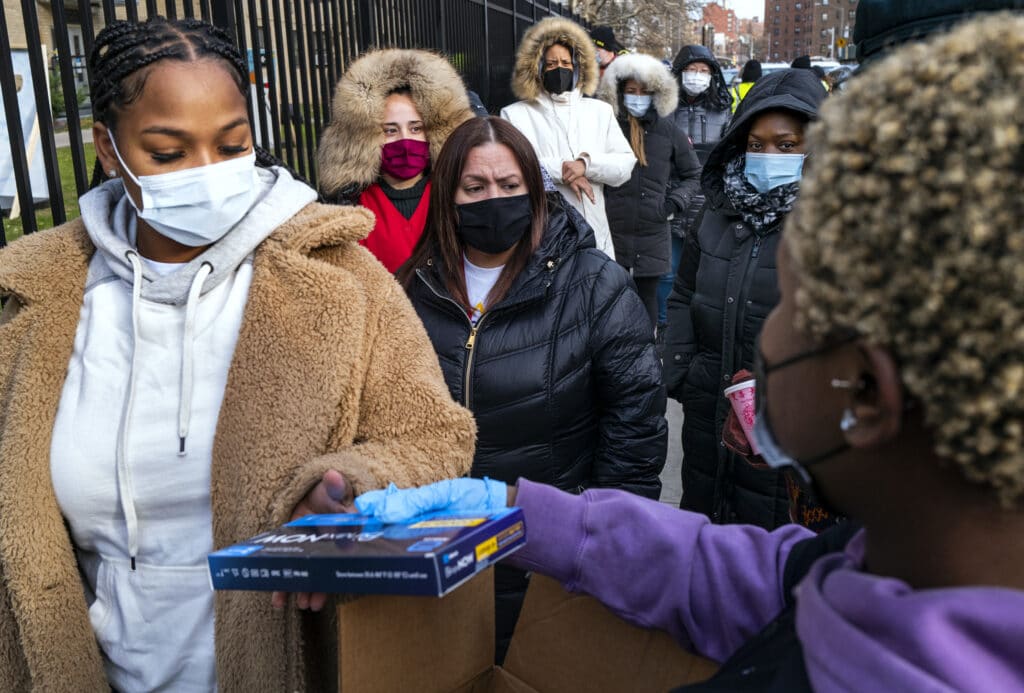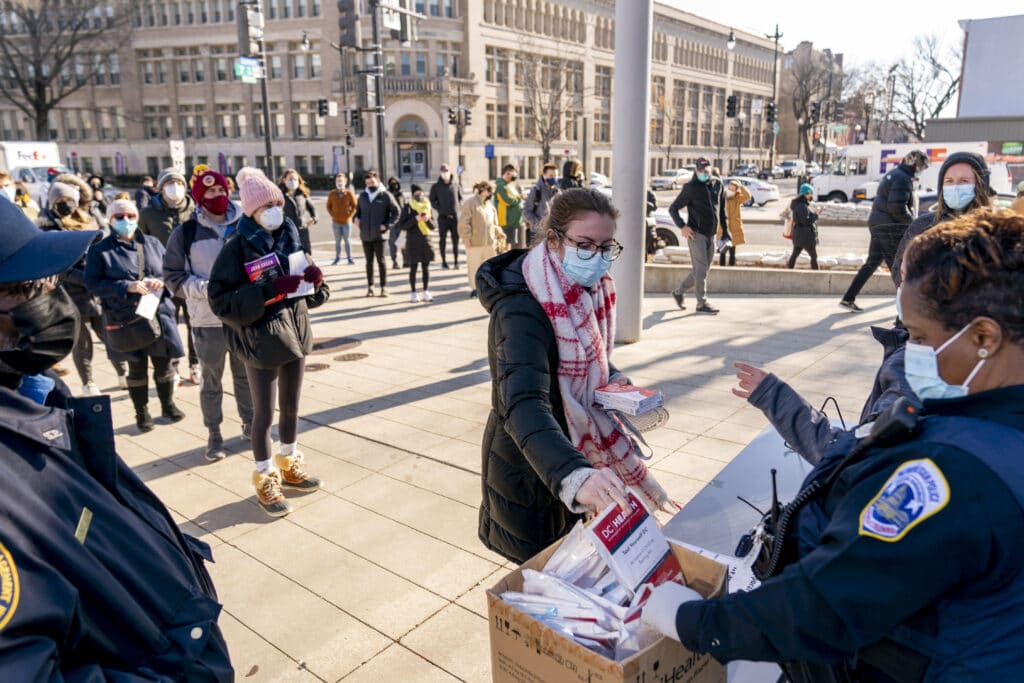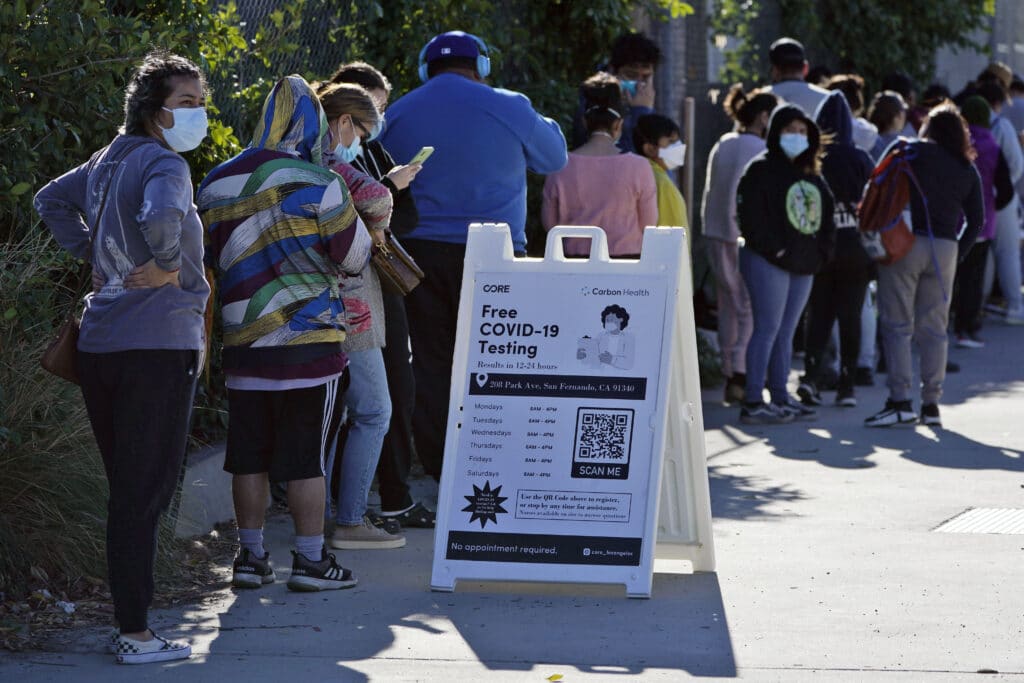The US infection numbers have been skewed from the start, government agencies, news outlets, hospitals and morgues all provided a varying degree of which data to be publicly reported by whoever was in charge, and unfortunately their person views on COVID. Now with omicron peaking, and the realization that it is no where near as dangerous as first thought, many media organizations recently told their editors and reporters to avoid emphasizing case counts in stories about the disease. As reported by the AP:
These counts do not include most people who test themselves at home or are infected without even knowing about it
NEW YORK (AP) — For two years, coronavirus case counts and hospitalizations have been widely used barometers of the pandemic’s march across the world.

But the omicron wave is making a mess of the usual statistics, forcing news organizations to rethink the way they report such figures.
“It’s just a data disaster,” said Katherine Wu, staff writer who covers COVID-19 for The Atlantic magazine.
The number of case counts soared over the holidays; an expected development given the emergence of a variant more transmissible than its predecessors.
Yet these counts only reflect what is reported by health authorities. They do not include most people who test themselves at home or are infected without even knowing about it. Holidays and weekends also lead to lags in reported cases.
If you could add all those numbers up — and you can’t — case counts would likely be substantially higher.
For that reason, The Associated Press has recently told its editors and reporters to avoid emphasizing case counts in stories about the disease. That means, for example, no more stories focused solely on a particular country or state setting a one-day record for number of cases, because that claim has become unreliable.
Throughout the media, there has been more caution in use of official case counts.
An NBC News story on Monday about the skyrocketing number of COVID cases relied on a one-week average of case counts. A Tuesday story simply referred to a “tidal wave” of cases.
During its coverage of a Senate hearing with health experts on Tuesday, the case counts CNN flashed onscreen were two-week averages. MSNBC used a variety of measurements, including a listing of the five states with highest reported numbers over the past three days.
On its website’s “Guide to the Pandemic,” The Washington Post used a seven-day average of cases and compared that number to last Tuesday’s, showing a 56% increase. The New York Times used a daily count in an online chart, yet also included a two-week trend in both cases and deaths.

An AP story Saturday by Jennifer Sinco Kelleher and Terry Tang headlined, “Omicron explosion spurs nationwide breakdown of services” was full of statistics from across the United States on hospitalization rates or employees calling out sick from work. The case count metric was not used.
“We definitely wanted people to go a little deeper and be more specific in reporting,” said Josh Hoffner, the news editor who helps oversee AP’s virus coverage.
Many news organizations are debating how best to use statistics now during the omicron surge, Wu said. But there are no easy answers.
“It’s how journalism works,” Wu said. “We need the data. We need to show receipts to readers. But I try to do it carefully.”
Hospitalization and death rates are considered by some to be a more reliable picture of COVID-19’s current impact on society. Yet even the usefulness of those numbers has been called into question in recent days. In many cases, hospitalizations are incidental: there are people being admitted for other reasons and are surprised to find they test positive for COVID, said Tanya Lewis, senior editor for health and medicine at Scientific American.
Despite the imperfections, case counts should not be ignored, said Gary Schwitzer, a University of Minnesota School of Public Health instructor and publisher of HealthNewsReview.org, which monitors health coverage in the media.
The numbers illustrate trends, giving a picture of which areas of the country are being hit particularly hard or where the surge may have peaked, he said. They can predict broader societal impacts, like where hospitals are about to be slammed or where there will be worker shortages.

“These are stories that may not be told adequately if only hospitalizations and deaths are emphasized,” Schwitzer said.
That’s a point emphasized in AP’s internal guidance, as well.
“They do have value,” Hoffner said. “We don’t want people to eliminate mention of case counts.”
There are some in public health and journalism who believe the current surge — painful as it is — may augur good news. It could be a sign that COVID-19 is headed toward becoming an endemic disease that people learn to live with, rather than being a disruptive pandemic, wrote David Leonhardt and Ashley Wu in The New York Times.
But if the past two years have taught anything, it’s about the danger in predictions, Lewis said.
“We’ve been surprised time and again,” she said. “We don’t know everything about the course of the pandemic. We still need to be humble and keep an open mind in terms of where things are going.”
By DAVID BAUDER






